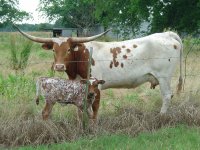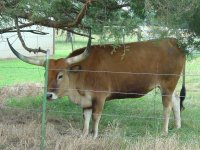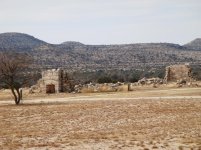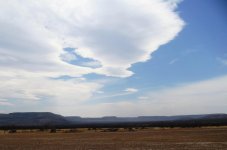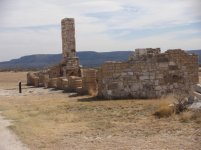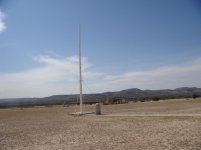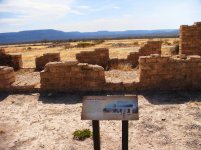OLDNAVYMCPO
US Veteran, Absent Comrade
Like many forum members, I'm a bit of a history nut. One period of particular interest to me is the era of Texas history following the War of Northern Aggression (you Yankees call it the Civil War). While Texans were off fighting in other southern states, the longhorns were running free and unmolested. As animals do, they reproduced. Well fewer men came home from the fighting than had marched off to fight. Texans were destitute following the war. No real money was in circulation. The only thing Texas had in quantity was cattle, wild longhorn cattle.
To give a bit of preamble needed here, Americans were moving westward even before the war. The military was generally responsible for founding and developing roads in the west. In 1848, Col. John Coffee Hays of the Texas Rangers, was sent with the task of finding a route between San Antonio and El Paso. He pretty much followed old Indian routes. The Army was tasked with developing the roads and establishing forts along the way to protect travelers. The forts were FT. Davis, Ft. Stockton, and Ft. Bliss. The first leg is along present day Hwy 17 thru Wild Rose Pass. Absolutely beautiful drive.
After the War, these forts were manned by Black troopers called the Buffalo Soldiers. The troops had to be feed so commissary officers bought beef on the hoof from local ranchers. When the demand exceeded supply, often the case, cattle drives ensued to supply not only the forts but also local settlers. The very first cattle drives were east to west, not to the north as many believe.
James M. Daugherty was a 14 year old Confederate courier during the war. Afterwards, he became a cowboy, probably with a long rope and a running iron, and started ranching. He built a cattle empire that spread to a number of states. Along the San Antonio to El Paso road, 32 miles north of Van Horn along State Hwy 54 lies his Figure 2 Ranch. An enormous expanse, wild and beautiful. Encompassing the mountainous area that was the scene of one of the last battles of the Indian wars with the Apache.
The Butterfield Stageline ran thru this area, closely following the old military road.
To give a bit of preamble needed here, Americans were moving westward even before the war. The military was generally responsible for founding and developing roads in the west. In 1848, Col. John Coffee Hays of the Texas Rangers, was sent with the task of finding a route between San Antonio and El Paso. He pretty much followed old Indian routes. The Army was tasked with developing the roads and establishing forts along the way to protect travelers. The forts were FT. Davis, Ft. Stockton, and Ft. Bliss. The first leg is along present day Hwy 17 thru Wild Rose Pass. Absolutely beautiful drive.
After the War, these forts were manned by Black troopers called the Buffalo Soldiers. The troops had to be feed so commissary officers bought beef on the hoof from local ranchers. When the demand exceeded supply, often the case, cattle drives ensued to supply not only the forts but also local settlers. The very first cattle drives were east to west, not to the north as many believe.
James M. Daugherty was a 14 year old Confederate courier during the war. Afterwards, he became a cowboy, probably with a long rope and a running iron, and started ranching. He built a cattle empire that spread to a number of states. Along the San Antonio to El Paso road, 32 miles north of Van Horn along State Hwy 54 lies his Figure 2 Ranch. An enormous expanse, wild and beautiful. Encompassing the mountainous area that was the scene of one of the last battles of the Indian wars with the Apache.
The Butterfield Stageline ran thru this area, closely following the old military road.

